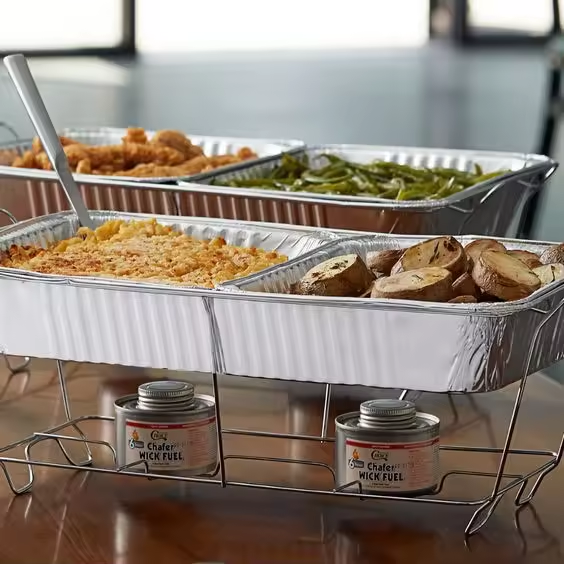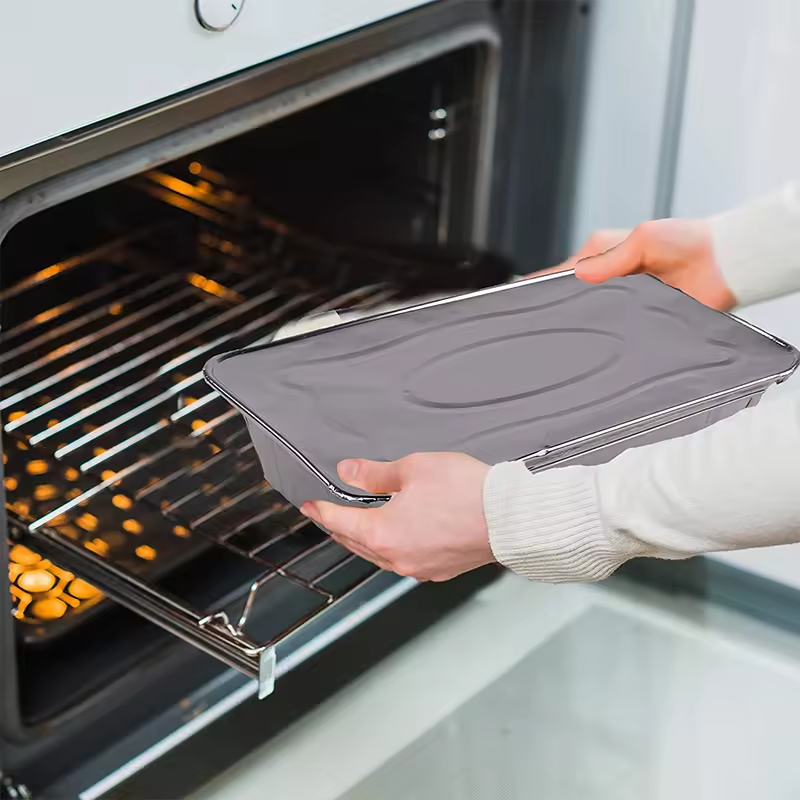When it comes to reheating food, convenience and safety are paramount. Aluminum containers are a common sight in kitchens, takeout restaurants, and meal prep scenarios. However, a frequent question arises: Is it safe to reheat food in aluminum containers? In this comprehensive guide, we’ll delve into their uses, safety concerns, and best practices, ensuring you can confidently enjoy your leftovers.
Understanding Aluminum Containers
Aluminum containers are lightweight, versatile, and cost-effective. They are designed for various purposes, from storage to cooking. Their ability to withstand high temperatures makes them a popular choice for many. However, like any cooking material, understanding their properties can help you make informed decisions.

Safety of Reheating Food in Aluminum
1. Heat Conductivity: One of the standout features of aluminum is its exceptional heat conductivity. This means food heats evenly, reducing the chances of cold spots where bacteria can thrive. When reheating, this is particularly beneficial for leftovers that you want to warm thoroughly.
2. Chemical Reactions: While aluminum is generally safe for most foods, the interaction with certain ingredients can be problematic. Acidic foods (like tomatoes) or alkaline substances (such as certain spices) may react with aluminum, potentially affecting the flavor and texture of your dish. Though this is typically not a health risk, it’s wise to avoid using aluminum containers for these specific types of food.
3. Microwave Safety: Microwave reheating requires special caution. Do not use traditional aluminum containers in the microwave unless they are explicitly labeled as microwave-safe. Standard aluminum can spark and pose a fire hazard. Always check for metal components and follow manufacturer guidelines to keep your kitchen safe.
4. Oven Safety: Aluminum containers are suitable for oven use. They can handle high temperatures without warping, making them ideal for baking or roasting. However, when using them under a broiler, monitor closely to prevent any damage, as high direct heat can alter their shape.
Best Practices for Reheating in Aluminum Containers
To ensure optimal safety and taste, follow these best practices:
– Check for Damage: Before using an aluminum container, inspect it for dents, punctures, or signs of wear. Damaged containers are more prone to leaks and may not be safe for food storage or reheating.
– Avoid Covering with Foil: If you choose to cover your food with aluminum foil while reheating, avoid letting it make direct contact with the food. This precaution helps mitigate any potential chemical reactions, particularly with acidic ingredients.
– Use the Right Temperature: When reheating, it’s crucial to bring the food to an internal temperature of 165°F (74°C). This temperature ensures that harmful bacteria are eliminated. A food thermometer is a handy tool to check the heat level accurately.
– Don’t Freeze in Aluminum: While short-term storage in aluminum is often fine, avoid freezing food in these containers for long durations. Over time, aluminum can become brittle, leading to breakage that compromises food safety.

Considerazioni ambientali
While aluminum is recyclable, it’s essential to encourage sustainable practices when using it. Consider reusing aluminum containers when possible and recycle them correctly to reduce environmental impact.
Conclusione
Reheating food in aluminum containers can be a safe and effective option if you’re aware of certain considerations. By understanding the properties of aluminum, keeping an eye on food interactions, and following practical reheating guidelines, you can enjoy your leftovers without worry. So, next time you consider reheating that delicious meal, remember these tips for a safe and satisfying dining experience!


